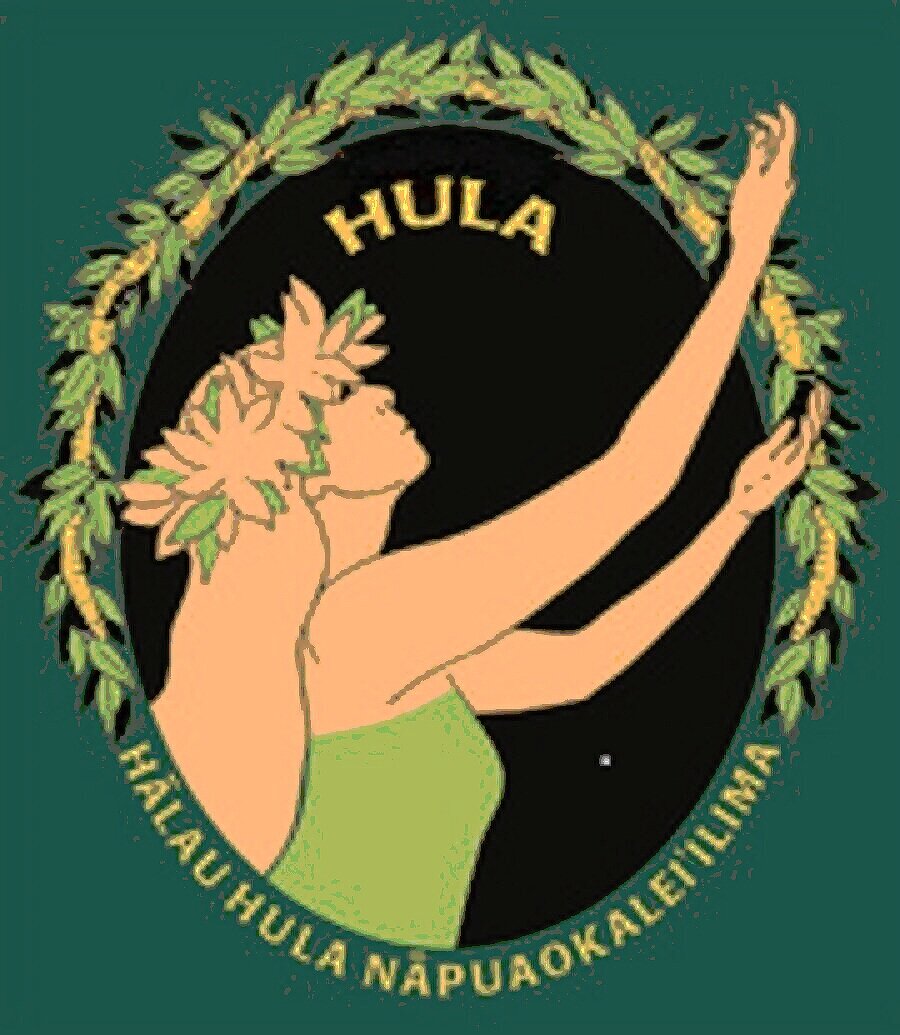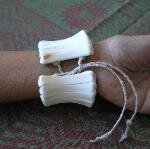Hawaiian Boar’s Tusk Bracelets
Hawaiian Boar’s Tusk Bracelets
This Hawaiian boar's tusk bracelet is a combination of a fine gift for a Kumu
Hula and a work of experimental archaeology. It exemplifies the highly
excellent crafting of the old times in Hawaii, where enormous amounts of time
went into making beautiful ornaments and garments, including the incredible
feather capes which contain millions of feathers.
When Capt. Cook first got to Hawaii in 1778, his artist depicted male
Hawaiian hula dancer wearing large and striking bracelets made by stringing
slightly ground boar's tusks together side by side, clear around the wrist.
Perhaps these multi-pointed bracelets evolved from exceptional fighting wrist
guards for chiefs. Yet we know women sometimes wore them also, both for
hula and ornament. Like other Hawaiian arts, these boar's-ivory bracelets
had a more refined side, too, and some tusks were cut down, ground more,
or even turned into shaped ivory pieces. Bracelets made from the latter are
rarest, and I only know of one specimen (in Bishop Museum, Honolulu) like
this one I created.
Now I know why they are so rare! Collecting 19 matching tusks for just a
small wrist takes years of begging from pig hunters and searching caves for
long-dead boars. Getting tusks out of boar jaws is an art in itself and very
time-consuming. Some tusks are cracked or naturally damaged, or have the
wrong size or curve; thus, many are unusable.
After the brass-hard tusks were cut at tip and middle by old-time Hawaiians
to get solid pieces (and how? - probably by sawing on and on with basalt or
obsidian chips), it no doubt took one whole day EACH for a Hawaiian
craftsman of Old to grind off the super-hard enamel and then shape the
pieces to a quadrangular cross-section by working the piece on a rasp of
flattened coarse lava. And this was just one step in the process. Once drilled
(with what small drill? - probably a quartz pump-drill tip), the pieces had to be
strung snugly on Hawaii's unique Olona fiber (the world's strongest natural
fiber). Then the work of grinding and filing the ends of the tusk pieces all to
the same length, followed by rounding their sharp edges and then the
leveling of the circumferential curve of the bracelet began. Once all that was
done, polishing with ever-finer stone and coral tools took place. Simply a
huge amount of work.
Modern power tools sped things up for this bracelet, but there is still a
good amount of hand work to do. This one took 20 hours or so of work, once
a set of tusks was collected. One good thing about Christmas is it goads this
type of meticulous and tedious work into completion.
Now to make the second bracelet, for Kehau to have a pair as in the old
times of hula!
----B. Ka'imiloa Chrisman, M.D. December, 2005



